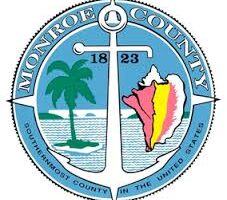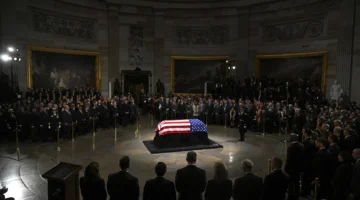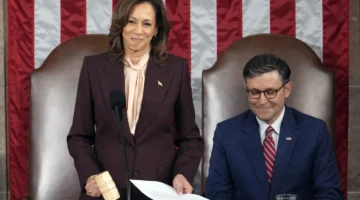Growing grassroots movements confronting school sex assault
FOREST GROVE, Ore. (AP) — A pair of Oregon school districts were intent on identifying warning signs that students might be contemplating a campus shooting when they stumbled on a threat far more pervasive yet much less discussed — sexual aggression among classmates.
Unsure at first what to do, the districts adapted the same early-intervention approach used to handle potential school shooters: Based on observations or tips, school staff now quietly keep an eye on kids they worry are sexually aggressive. Parents help the school try to understand why their child is acting out. And the school intervenes if behavior threatens to escalate, whether the student is a kindergartener or about to graduate.

This awakening puts the districts at the forefront of grassroots efforts to grapple with a sensitive and complex challenge that U.S. universities already have been forced to confront but elementary and secondary schools have mostly avoided.
A yearlong Associated Press investigation uncovered about 17,000 official reports of sexual assaults by students over a recent four-year period, a figure that doesn’t fully capture the problem because such violence is greatly under-reported and some states don’t track it.
AP also found that only 18 states required training for teachers, school administrators or students focused on peer-on-peer sexual assaults, leaving many educators to struggle with both how to protect victims and manage the risk of offenders.
There also is no K-12 equivalent to the federal law that requires colleges to track student sexual assaults, provide services to victims and devise prevention programs. Under the Obama administration, the U.S. Education Department and White House encouraged K-12 schools to take similar steps, but that was only a recommendation.
To fill the void, technology companies have joined school districts, students and parents in trying novel approaches to curtail student-on-student attacks. Much like the campaign against college rapes took time to build momentum, so, too, is society learning how to contend with the realization that sexual violence can start much earlier.
“I think it’s important — we all do — to show that sexual assault can affect every single person, no matter who they are, no matter what their story is,” said Brena Levy, a high school senior and student organizer in Kansas. “That’s what we’re trying to get across.
___
WATCHFUL EYES
No single attack prompted the Forest Grove School District to monitor students. Instead, administrators were encountering a succession of situations they didn’t know how to handle, such as unwanted groping.
“The principals were just asking ‘What should we do?’” said Kimberley Shearer, coordinator for the new Sexual Incident Response Committee at the 6,000-student district.
Experts who have treated young sexual offenders stress the value of early intervention, and research cites the importance of a culture that encourages students to report incidents without fear of retaliation and with the expectation that adults will do the right thing.
That kind of trust is essential in Forest Grove, where school officials have learned the difference between age-appropriate experimentation and dangerous sexual behavior, Shearer said. Officials may be able to scan social media, but the kids know what’s really going on.
To discuss the more serious cases, a group of school administrators meets regularly in the basement of district headquarters in this rural, farming district between Portland and the Pacific Ocean. Also at the table are local law enforcement, juvenile social workers, child protection officials and a psychologist.
The model works because it seamlessly integrates agencies, organizations and resources outside of school, said Mario Scalora, a psychology professor at the University of Nebraska, Lincoln, who specializes in threat assessment and targeted violence.
The concept is to protect student welfare, but reducing legal exposure is another motivation. If school officials do nothing after learning of an assault — even one that occurs off-campus — and the student in question later attacks someone else, that has the makings of a devastating lawsuit.
The program not only helps victims but also counsels students who are sexually aggressive, in hopes of reforming them.
Forest Grove’s program just got off the ground in January, but a much larger Oregon district pioneered the approach years ago and has come to see it as indispensable.
The Salem-Keizer School District developed the sexual incident committee model in 2009, basing the approach on its own leading system for spotting school shooters.
The 43,000-student district wouldn’t discuss how many kids it monitors in a typical year. Wilson Kenney, the psychologist who set up the system, said about 300 cases got a school-level review in its early days, while another 100 got a deeper look by a range of experts.
Cases in Salem-Keizer range from younger students who slap, grab, pinch or worse, to high schoolers arrested for sexual crimes, said Shelley Rutledge, the school psychologist who oversees the program.
To illustrate how a school might handle a lower-level issue, she offered the example of a 10-year-old who had shown overly sexualized behavior during unsupervised play with kids of different ages at their apartment complex. On campus, school officials might more closely supervise the student during loosely structured situations such as recess.
“We can’t reject a student because they come to us with a high degree of risk factors,” Rutledge said. “How do we remove risk factors?”
___
VOCAL BYSTANDERS
The concept is simple: create a retaliation-free atmosphere that encourages students to raise their voices not just if they see an assault, but also if they see disrespectful behavior that could escalate.
This so-called “bystander intervention” approach got major endorsements in 2014 when the Obama administration launched the “It’s On Us” initiative as part of a broader campaign to draw awareness to college sexual assaults.
“Step up! Be responsible. Intervene,” Vice President Joe Biden said during a White House briefing. “You have an obligation to make a pariah of those on campus who abuse another person.”
Schools across the country have been applying bystander intervention in various forms.
In Kentucky, an organization known as Green Dot has been preaching an intolerance for violence using positive peer pressure, in much the same way that designated driver campaigns focus not on blame but rather on safe solutions. Persuading socially influential students to spread the message is key.
Research published this year suggests the approach is working. Surveys of nearly 90,000 Kentucky high school students show sexual violence decreased significantly where a district implemented the program.
In Massachusetts, a program initiated by the state attorney general and owner of the New England Patriots is training 1,000 high school student leaders at three dozen schools to be “active bystanders” who prevent violence by recognizing when a relationship or situation is unhealthy.
“We can deal with it on the back end, when people get in trouble and they end up in our courts, but it’s so much better to deal with this on the front end,” Attorney General Maura Healey said.
Meanwhile, technology companies are creating new ways people can intervene — or at least speak up.
Millions of students are using apps to send anonymous text messages and photographs to school administrators. Because school officials can communicate in real time with whoever is reporting an incident, they can step in immediately. Investigating incidents suddenly becomes much easier.
In the Cherryvale School District in Kansas, 7th through 12th graders started using the StopIt app about a year ago. Some students initially called it the “tattletale” app, but now they are getting more comfortable with it, assistant principal James Renfro said.
“They all have cellphones,” he said. “It’s an opportunity to, at your fingertips, report something that is not right.”
___
BOTTOM-UP REFORM
Students have begun organizing their own efforts to fight sexual assault in grade schools. Groups such as SafeBAE and Know Your IX encourage activism and coach fellow students on the power of bystander intervention and rights under Title IX, the U.S. law increasingly used to address school sexual violence and harassment.
The video and in-person presentations that SafeBAE offer come from high school sex assault survivors who co-founded the group. Teenagers tend to be skeptical of advice from adults, so the peer-to-peer approach helps the message resonate, said Shael Norris, the group’s executive director.
“You can’t end sexual assault freshman year of college,” said Norris, who spent her career working on violence prevention before creating SafeBAE with the students.
Signs that such student-led activism has taken root also are evident in two cases in which reluctant school districts were prodded to respond to sex assault allegations.
Last September, police began investigating after a Kansas district received a report a boy had attacked a girl in a school bathroom. Students and parents didn’t find out until local news broke the story about a week later; the district said it didn’t go public because no one else was at risk.
Feeling blindsided, a group of students at Shawnee Mission East High School in suburban Kansas City mobilized a response: Rally classmates to wear black clothing the next day. Social media spread the word as #WearBlackToStopAttacks, and several hundred students participated — as did more than a dozen schools in the region.
“Typically when you hear about quieted sexual assaults, it’s on college campuses,” said senior Katie Kuhlman, who helped organize the action, along with Brena Levy. “So hearing that it had happened at our school, but not from our administration, it was like a red flag.”
The students kept going, leading assemblies and inviting speakers to discuss consent and sexual violence. The campus newspaper published a package of stories and a poll in which about one in eight of the 511 students surveyed reported experiencing some form of sexual assault.
The principal thanked students, in a campus-wide email, for “making a difference.” But the school district declined AP’s request to talk.
In Oklahoma, a school district hired victim advocates after sustained student pressure over a failure to protect girls who had been attacked.
Three girls said that after they reported being assaulted, they were harassed by other students and had to leave Norman High School because officials did nothing to stop the bullying, according to a lawsuit they settled with the district. The district said it investigated, quickly suspended the boy accused and responded to one bullying case. The boy pleaded no contest to rape charges in one incident and served time.
Still, students remained concerned, including Danielle Brown, who organized a student walkout in November 2014.
As many as 600 students left class and lined several blocks where, joined by local residents, they chanted and carried posters such as “Stand with our girls.” Organizers gave the school a list of demands, including student and faculty training, and the creation of a victim advocate position.
“When we first came on the scene, there was a ton of pushback from the school district,” said Brown’s aunt, Stacey Wright, who helped organize the protest. “They really tried right up until the moments of our protests to try to discredit us.”
Days later, superintendent of Norman Public Schools Joe Siano announced changes, including new advocates at both district high schools. The district has since added two more advocates for its four middle schools and now spends more than $250,000 on the program, Siano said.
“If student voices don’t impact how you … make decisions, then I think you’re probably in the wrong business,” he said.
Sexual assault cases can be challenging — especially if they’re off-campus, as most of the Norman attacks were — and Siano said he has come to understand that the district could have done a better job handling the girls’ trauma.
“As schools, we don’t have the luxury of picking and choosing which emergencies are more important,” he said. “Sexual assault doesn’t come up every day, but you have to be prepared.”
___
Pritchard reported from Los Angeles, Dunklin from Dallas. Contributing to this report were Emily Schmall in Dallas; Robin McDowell in Minneapolis; Michelle R. Smith in Providence, Rhode Island; and Juliet Linderman in Baltimore.
___
If you have a tip, comment or story to share about student-on-student sexual assault at K-12 schools, please email: [email protected]. See AP’s entire package of #SchoolSexAssault stories here: https://www.apnews.com/tag/SchoolhouseSexAssault
___
Contact reporters on Twitter at https://twitter.com/lalanewsman , https://twitter.com/ReeseDunklin and https://twitter.com/gflaccus
[livemarket market_name="KONK Life LiveMarket" limit=3 category=“” show_signup=0 show_more=0]






No Comment